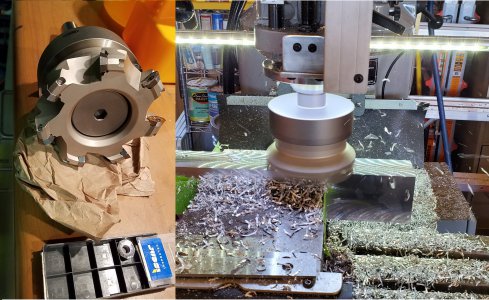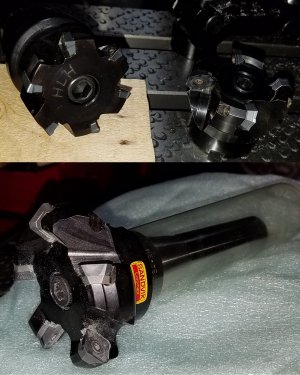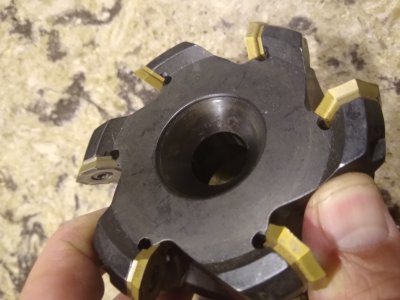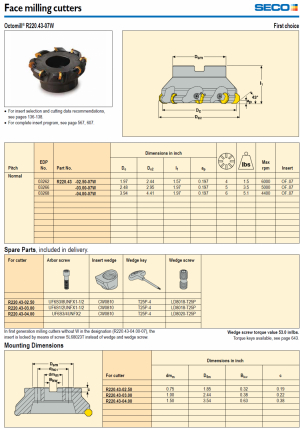- Joined
- Jun 12, 2014
- Messages
- 4,817
I use a similar Octo mill Iscar F45KT 4" on my Acra/Sharp mill with 3 Hp and am not limited by the Hp or rigidity, if I recall I was taking 0.05" facing cuts on 7075 at 3200 RPM in the picture below. I did have inserts specifically for aluminum, the down side is the cost and availability of inserts, but with 8 cutting edges one sets of inserts will probably be all that I need. I used a Sowa R8 shell mill arbor which appear to be very well made and reasonably priced, although there are a multitude of other arbor vendors that will also work. I have been very happy with the performance/finish of the F45KT, but I am not planing on using it for steel as I have other smaller face mills for that purpose including another Octa insert face mill in 2" diameter. Positive rake requires less Hp, but can be more fragile and more limited DOC. In steel I have been using a Haas HS6NP 2" face mill which allows deeper cuts with a very clean surface, the insert pocket is neutral but the inserts are positive/negative in geometry and handle steel effortlessly.

 www.suncoasttools.com
www.suncoasttools.com



Cutting Tools Distributor - Industrial Tools, Equipment & Supply Company - Suncoast Precision Tools
Suncoast Precision Tools - An Industrial Supply Company & renowned Cutting Tools Distributor providing high quality Industrial Tools and Equipment since 1963.





